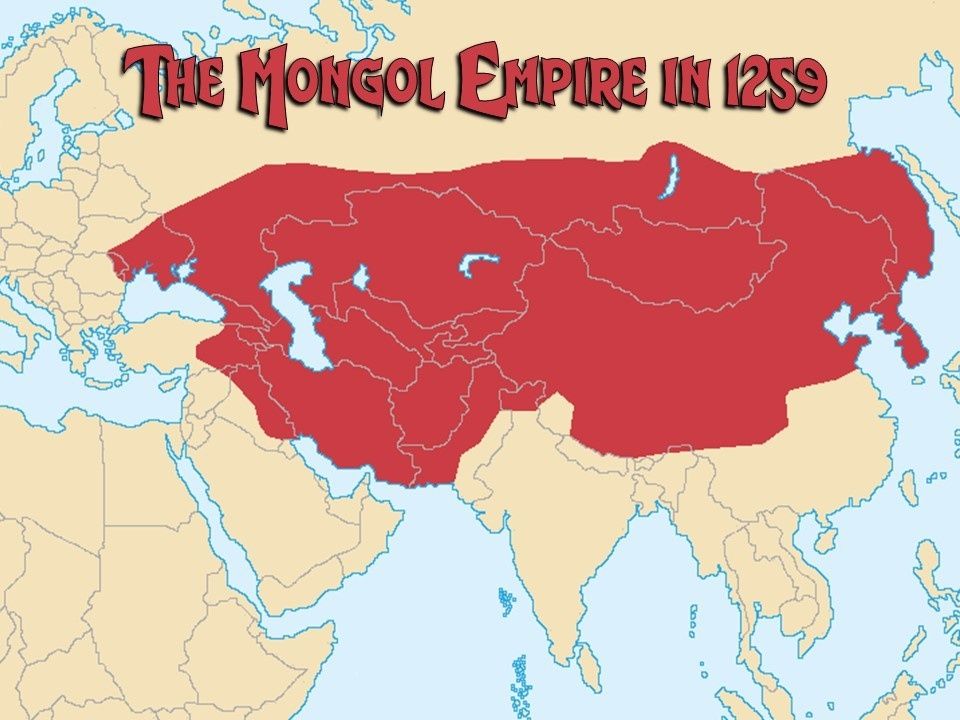The Mongol Empire

The Mongol Empire grew after several nomadic tribes of Mongolia in East Asia unified under the leadership of a tribal leader named Genghis Khan. After many conquests, Genghis Khan was proclaimed ruler of the Mongols in 1206. Under his rule, the Mongol Empire grew rapidly through conquest.
The Mongol armies attacked in all directions from the Mongolian Steppe and penetrated into China, Korea, Turkistan, Samarkand, and Russia. Many of these invasions included large-scale slaughters of local populations. As a result, Genghis Khan and his empire have a fearsome reputation in local histories.
The Mongols' remarkable military conquests came from their brilliant strategies and tactics. Their armies used skilled soldiers on horseback who could quickly attack. They used bows and arrows skillfully, and after weakening the enemy and bringing about chaos on the battlefield, they engaged in hand-to-hand combat with swords, spears, and lances.
The peace that came after their conquests is known as the "Pax Mongolica" and it allowed for trade, technology, and ideas to spread across Eurasia.
Genghis Khan died in 1227 after defeating the Western Xia Dynasty. His descendants continued his conquests across most of Eurasia.


Genghis Khan's grandson Kublai Khan was only 11 years old when Genghis died. He would eventually rule the Mongol Empire from 1260-1294. He is most famous for conquering Song China, creating the Yuan Dynasty, and assuming the title of Emperor of China in 1271.
The Yuan Dynasty ruled over present-day China, Mongolia, and Korea. Kublai ruled as the first Yuan emperor until his death in 1294.
Kublai's establishment of the Yuan Dynasty accelerated the fragmentation of the Mongol Empire. The Mongol Empire broke up into four khanates, or empires. These were the Golden Horde khanate in the northwest, the Chagatai Khanate in Central Asia, the Ilkhanate in the southwest, and the Yuan dynasty in the east, which was based in modern-day Beijing. Each khanate pursued its own interests and objectives.
At its peak, the Mongol Empire covered about 9 million square miles, making it the largest contiguous land empire in world history. Originating in Mongolia in East Asia, the Mongol Empire eventually stretched from Eastern Europe and parts of Central Europe to the Sea of Japan, extending northward into parts of the Arctic. The Mongol Empire continued eastward and southward into the Indian subcontinent, and westward as far as Northern Europe.